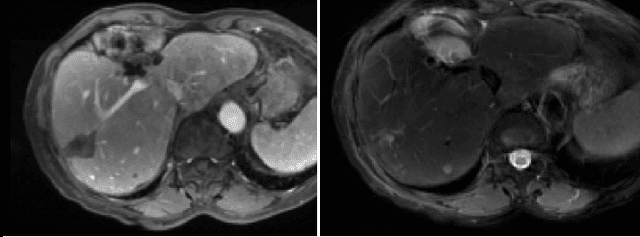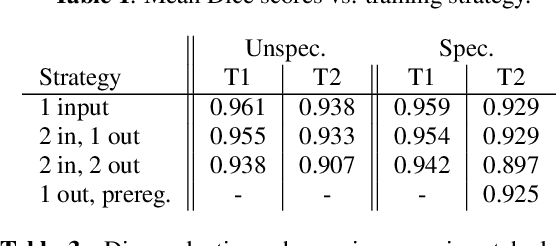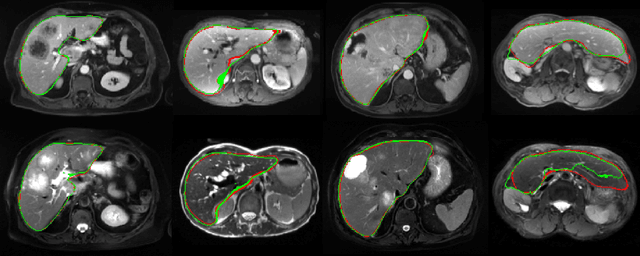Olivier Nempont
Imitating Radiological Scrolling: A Global-Local Attention Model for 3D Chest CT Volumes Multi-Label Anomaly Classification
Mar 27, 2025



Abstract:The rapid increase in the number of Computed Tomography (CT) scan examinations has created an urgent need for automated tools, such as organ segmentation, anomaly classification, and report generation, to assist radiologists with their growing workload. Multi-label classification of Three-Dimensional (3D) CT scans is a challenging task due to the volumetric nature of the data and the variety of anomalies to be detected. Existing deep learning methods based on Convolutional Neural Networks (CNNs) struggle to capture long-range dependencies effectively, while Vision Transformers require extensive pre-training, posing challenges for practical use. Additionally, these existing methods do not explicitly model the radiologist's navigational behavior while scrolling through CT scan slices, which requires both global context understanding and local detail awareness. In this study, we present CT-Scroll, a novel global-local attention model specifically designed to emulate the scrolling behavior of radiologists during the analysis of 3D CT scans. Our approach is evaluated on two public datasets, demonstrating its efficacy through comprehensive experiments and an ablation study that highlights the contribution of each model component.
CT-3DFlow : Leveraging 3D Normalizing Flows for Unsupervised Detection of Pathological Pulmonary CT scans
Mar 27, 2024Abstract:Unsupervised pathology detection can be implemented by training a model on healthy data only and measuring the deviation from the training set upon inference, for example with CNN-based feature extraction and one-class classifiers, or reconstruction-score-based methods such as AEs, GANs and Diffusion models. Normalizing Flows (NF) have the ability to directly learn the probability distribution of training examples through an invertible architecture. We leverage this property in a novel 3D NF-based model named CT-3DFlow, specifically tailored for patient-level pulmonary pathology detection in chest CT data. Our model is trained unsupervised on healthy 3D pulmonary CT patches, and detects deviations from its log-likelihood distribution as anomalies. We aggregate patches-level likelihood values from a patient's CT scan to provide a patient-level 'normal'/'abnormal' prediction. Out-of-distribution detection performance is evaluated using expert annotations on a separate chest CT test dataset, outperforming other state-of-the-art methods.
Comparing Deep Learning strategies for paired but unregistered multimodal segmentation of the liver in T1 and T2-weighted MRI
Jan 18, 2021



Abstract:We address the problem of multimodal liver segmentation in paired but unregistered T1 and T2-weighted MR images. We compare several strategies described in the literature, with or without multi-task training, with or without pre-registration. We also compare different loss functions (cross-entropy, Dice loss, and three adversarial losses). All methods achieved comparable performances with the exception of a multi-task setting that performs both segmentations at once, which performed poorly.
 Add to Chrome
Add to Chrome Add to Firefox
Add to Firefox Add to Edge
Add to Edge